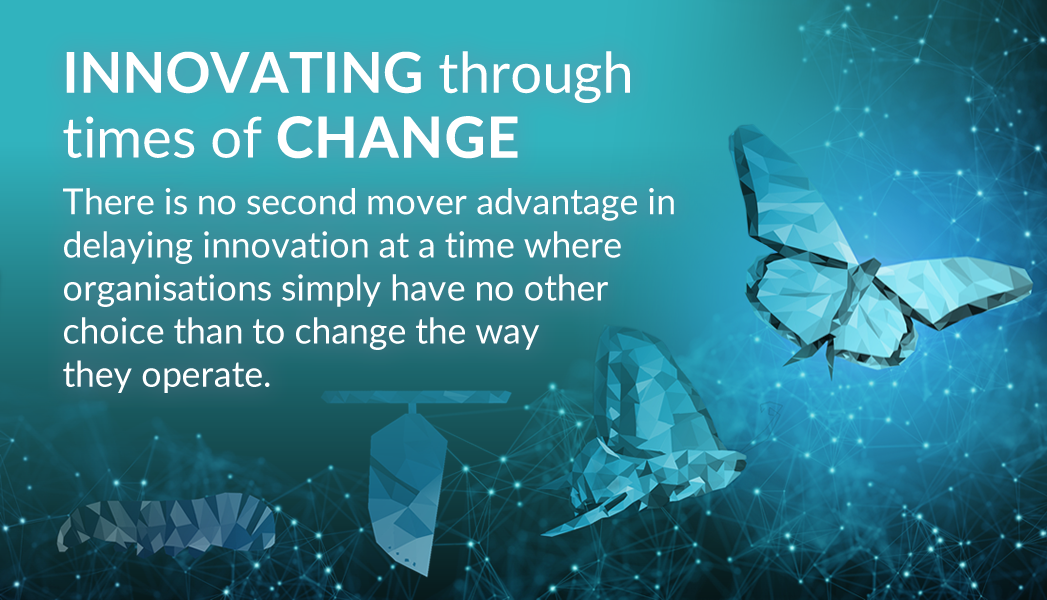
Organizations are paying top dollar for high-quality data pipelines as we approach a data-as-a-service market.
The traditional transformation-first approach is giving way to more intelligent, match-first pipelines that prioritize data consistency from the start.
Modern enterprises recognize that reliable data is a competitive necessity. Match-first pipelines represent a prominent shift in how we think about data quality, moving identity resolution upstream where it can have the greatest impact.
MatchX exemplifies this next generation of DataOps tools, leveraging AI to automate matching processes. By addressing data consistency at the point of ingestion, organizations can build a foundation of trust that flows through their entire analytics ecosystem.
Why Traditional DataOps Is No Longer Enough
Traditional rule sets are fundamentally reactive. This creates dangerous blind spots for “unknown unknowns” that silently corrupt downstream systems. By the time these issues surface in reports or models, trust in data has already eroded.
With unstructured data projected to account for 80% of worldwide data in 2025, rigid pipelines designed for tabular formats are increasingly obsolete. Semi-structured sources like social media contain valuable insights, yet traditional DataOps toolchains struggle to integrate or validate this content.
MatchX is a modern solution addressing these challenges by shifting from transformation-first to match-first pipelines. By employing intelligent automation that validates and reconciles data at ingestion, organizations can prevent issues before they cascade through systems, catching anomalies early, adapting to unstructured formats, and providing the context needed for efficient remediation.
Intelligent Automation: DataOps That Learns and Adapts
The future of DataOps lies in intelligent automation, where pipelines don’t just move data but actively learn from it.
Traditional data pipelines rely on predefined transformation logic that remains fixed until manually updated. Intelligent automation, by contrast, integrates machine learning directly into DataOps workflows.
Consider a case: For example, a customer “Jane Smith” might appear in multiple databases (sales, marketing, support) with variations of her name or address. A transformation-first pipeline might aggregate her purchase data and her support tickets separately, not realizing they refer to the same person, resulting in a fragmented customer view.
Now, intelligent pipelines continuously refine their understanding of what constitutes “normal,” and when exceptions occur, they’re categorized, prioritized, and potentially auto-remediated based on learned patterns from previous similar issues.
Similarly, intelligent automation for enterprises helps in managing thousands of data assets across global operations.
MatchX exemplifies this approach through automated data lineage tracking that creates visual maps of how data moves and transforms throughout the organization. When changes occur in source systems, impact analysis happens automatically, alerting stakeholders to potential downstream effects before problems emerge.
Data Cleaning and Preprocessing
Raw data typically contains numerous imperfections requiring systematic resolution. With your data collected and integrated, the critical task of cleaning and preprocessing begins, a phase that often consumes up to 80% of data scientists’ time.
Missing values must be addressed through strategic imputation rather than simple deletion, which can introduce bias. Inconsistencies in formats and representations need standardization:
- Ensuring uniform date formats
- Consistent categorical values
- Aligned measurement units
Error detection requires both automated anomaly identification and domain expertise to correct impossible values, duplicates, and outliers that could mislead your AI models.
AI-driven automation transforms this through platforms like MatchX. Its self-learning models can detect inconsistent patterns and suggest corrections, while the platform’s Quality Centre validates data at scale. These tools accelerate cleaning and also enhance reproducibility by encoding preparation workflows that can be consistently applied to new data streams.
How Match-First Pipelines Build Trust from the Start
Traditional pipelines often merge or transform data without first ensuring that common entities are properly identified and deduplicated.
Modern match-first approaches employ sophisticated fuzzy logic (an approach that proposes multiple truth variables, which can be any real number between 1 and 0) and probabilistic matching algorithms (statistical analysis to determine the likelihood that two records belong to the same entity, even with discrepancy) that can identify likely matches despite variations in the data. For instance, “Acme Inc.” vs “Acme Corporation” vs “ACME Co.” might fail to join on exact keys, but match-first algorithms recognize them as the same entity with quantifiable confidence.
MatchX does this with a comprehensive matching toolkit that includes:
- Exact matching for when unique IDs exist
- Fuzzy matching with domain knowledge (understanding nicknames, common typos)
- Probabilistic models that statistically weigh multiple attributes
- Support for non-Roman scripts via transliteration
Each potential match receives a confidence score, allowing for automatic merging of high-confidence matches while routing borderline cases to human review, balancing automation with accuracy.
While most ETL and ELT tools still treat entity resolution as an afterthought, the industry is clearly moving toward match-first principles. Gartner now emphasizes “matching and linking” as critical capabilities, recognizing that data trustworthiness begins with identity resolution.
Where DataOps Needs to Go Next?
DataOps is shifting from operational methodology to being strategic. In the meantime, several emerging frontiers promise to redefine how organizations manage their data assets. These advancements will shape the next generation of practices and tools, extending the value of match-first pipelines and intelligent automation across the enterprise.
Embracing the Unstructured Data Challenge
As already discussed, unstructured data growth is exponential. This explosive growth demands a radical rethinking of DataOps approaches. Future-ready pipelines must seamlessly incorporate documents, images, audio logs, and sensor readings alongside traditional tables.
Bridging DataOps and ModelOps
Industry pioneers are now integrating data quality monitoring with model monitoring to create closed-loop systems that detect drift early and trigger appropriate remediation. MatchX maintains clear audit trails of how data transforms through the pipeline. It can aid data scientists to quickly trace model degradation back to specific data changes, reducing troubleshooting time and maintaining model accuracy.
Democratizing Data Quality
The next frontier of DataOps involves extending participation to even non-technical business roles in monitoring and improving data through visual profiles and plain-language interactions.
MatchX participates in this trend through role-based access controls and intuitive interfaces that allow marketing specialists to review potential customer duplicates, finance teams to validate revenue integrity, and compliance officers to ensure regulatory adherence without dependency on technical teams.
Compliance by Design
As regulatory requirements intensify globally, DataOps must evolve beyond efficiency. The “compliance by design” approach automates regulatory controls rather than treating them as post-processing steps.
Next-generation platforms like MatchX are facilitating this by incorporating detailed audit trails, automated masking of sensitive data, and configurable retention policies directly into the pipeline.
Automating for Accuracy, Not Just Speed
This shift from pipeline speed to pipeline trust reflects a broader evolution in how enterprises think about data operations. A Capgemini study underscored that speed, accuracy, and trust are now ranked among the top priorities for data teams in the UK and EU markets.
Across industries, firms are reevaluating their DataOps strategies with one central question: Can we trust the data we’re delivering?
The answer increasingly depends on two things: intelligent automation and match-first architecture.
MatchX plays a vital role in operationalizing this shift. Its platform blends AI-driven remediation workflows with precision-matching logic and customizable quality rules. Stakeholders gain access to real insights, enabling continuous visibility into data health across departments. These visual touchpoints also support compliance with regional regulations like GDPR and HIPAA.
The future of DataOps belongs to teams that can move fast and prove their data is right. Intelligent automation ensures pipelines adapt to change. Match-first logic ensures pipelines start with clean, consistent inputs. Together, they form the backbone of a high-trust data strategy.
Ready to see MatchX in action? Book a demo and transform how your organization handles data quality…starting today!
Contact us or Visit us for a closer look at how VE3’s solutions can drive your organization’s success. Let’s shape the future together.
FAQ's
1. What is a match-first pipeline, and how does it differ from traditional approaches?
A match-first pipeline prioritizes data consistency by performing identity resolution at the point of ingestion, rather than after transformation. Unlike traditional transformation-first approaches that merge or transform data without ensuring proper entity identification, match-first pipelines employ sophisticated matching algorithms to identify and deduplicate common entities from the start, building a foundation of trust that flows through the entire analytics ecosystem.
2. Why are traditional DataOps approaches becoming obsolete?
Traditional DataOps approaches are becoming obsolete because they rely on reactive rule sets that create blind spots for “unknown unknowns,” silently corrupting downstream systems. Additionally, with unstructured data projected to account for 80% of worldwide data by 2025, rigid pipelines designed for tabular formats can’t effectively handle semi-structured sources like social media, limiting organizations’ ability to extract valuable insights.
3. How does intelligent automation enhance modern data pipelines?
Intelligent automation integrates machine learning directly into DataOps workflows, allowing pipelines to actively learn from data rather than relying on fixed transformation logic. These systems continuously refine their understanding of what’s “normal,” automatically categorize and prioritize exceptions, and potentially auto-remediate issues based on learned patterns. Features like automated data lineage tracking create visual maps of data movement and alert stakeholders to potential downstream effects before problems emerge.
4. What matching capabilities does MatchX offer to ensure data consistency?
MatchX offers a comprehensive matching toolkit that includes exact matching for unique IDs, fuzzy matching with domain knowledge (understanding nicknames and common typos), probabilistic models that statistically weigh multiple attributes, and support for non-Roman scripts via transliteration. Each potential match receives a confidence score, allowing automatic merging of high-confidence matches while routing borderline cases for human review, balancing automation with accuracy.
5. How is DataOps evolving to meet future challenges?
DataOps is evolving from an operational methodology to a strategic function by embracing unstructured data challenges, bridging DataOps with ModelOps through integrated quality and model monitoring, democratizing data quality with intuitive interfaces for non-technical users, implementing compliance by design with automated regulatory controls, and shifting focus from pipeline speed to pipeline trust through intelligent automation and match-first architecture.









